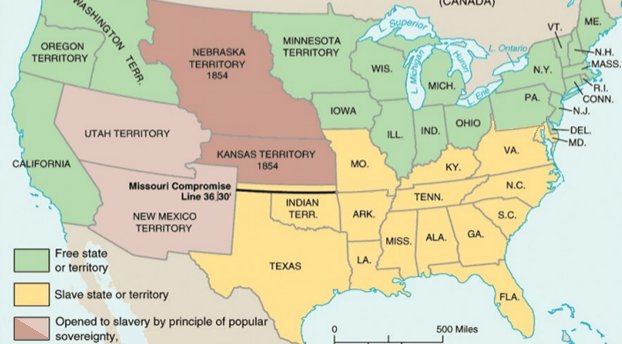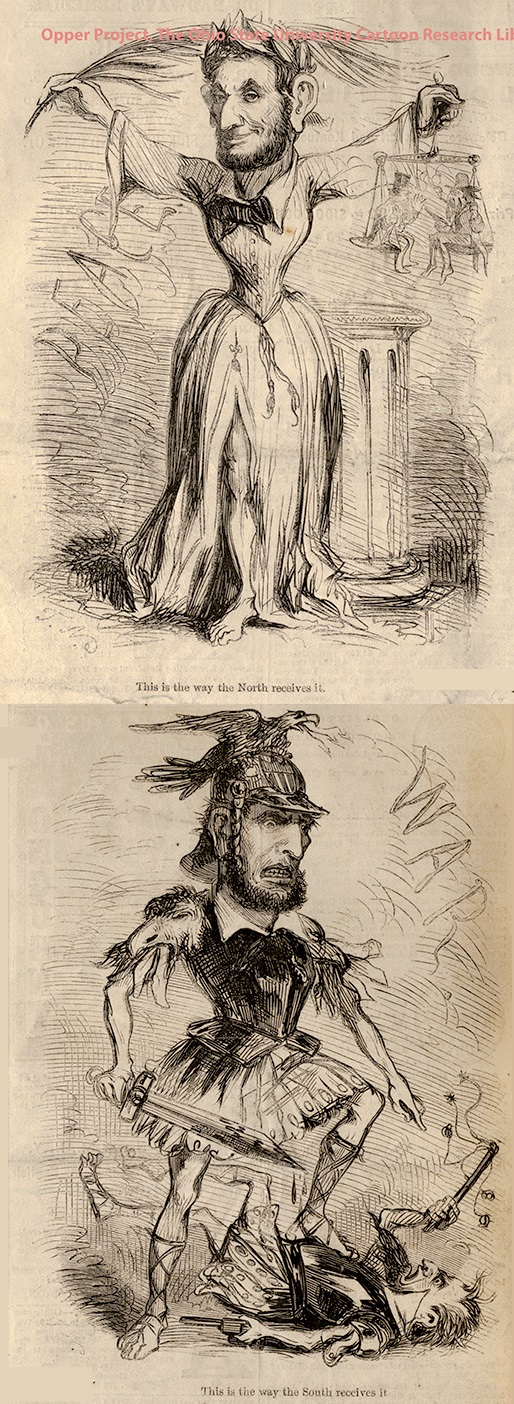|
|
NOTE: the American Civil War topic is a key topic on the AQA specification. It is NOT a stated topic on the Edexcel specification, although it does crop up as a factor in the Homesteader movement and the origins of cattle ranching.
|
|
There are different ways you can look at this issue:
Underlying Causes of the American Civil War [STEPS](Click on the u orange arrows to reveal more information)
|
Going DeeperThe following links will help you widen your knowledge: A teachit Card Sort and Causes Grid suggests causes with accompanying exercises (pdf) Interesting teachit resource on Interpretations of Lincoln (pdf)
YouTube What caused the Civil War: - 1-minute summary What caused the Civil War: - Pete Jackson 1860 Election & the Road to Disunion: - Crash Course US History (really good, but watch it AFTER your have studied this page)
|
|
|
|
|
|
|
|
|
|
|
|
Events Leading to the American Civil War
|
|
Consider:The ten events that follow were all key events in the lead-up to the war. You will be able to see the increasing tension which exploded into conflict in 1861. For each event, ask yourself how the South, and how the North would have felt about the outcome (and whether they were FOR it or AGAINST it), then compare your answer to mine by clicking on the u orange arrows.
This map should help you understand some of the places mentioned in the text.
|
|
|
Source A
This cartoon of 1861 satrises how Lincoln's Inaugural Speech was perceived in the North, and in the South.
|
|
|
|
|
|
|
|
|
|
|
|
|
|
|
|
|
|
|
|
Historiography of the Causes of the American Civil War
In the years after the Civil War, politicians in the South – who at the start of the war had to a man named slavery as the cause for which they were fighting – changed tack. It was not about slavery, they said, but about the rights and freedoms of the States to live how they wanted to live; in this way, they portrayed the war as an attack by the federal government on their Liberty. This theory is called the ‘Lost Cause’, and there are many people in the South who still believe it to this day. In 1917, James Ford Rhodes wrote first great history of the war. For him, the war was fought to end slavery: it was “an uncompromisable moral issue” contested by two entrenched sides. “In April, 1861”, he wrote, “war was undoubtedly inevitable… The irrepressible conflict had come to a head”. This became known as the “inevitability thesis”. In 1927, Charles and Mary Beard suggested another theory. The War, they said, was a conflict of economic interests – particularly, who was going to benefit from the huge territories being opened up in the west. For them, the issue of ‘slave’ and ‘free’ in the West was actually a matter of ‘yours’ or ‘ours’. In 1941, Frank Owsley, a southern historian speaking to the Southern Historical Association, blamed sectionalism – especially the sectionalism of the north. A ‘war psychosis’ had grown up in the South, he said, by which “the southern people felt it both abhorrent and dangerous to continue to live under the same government with the people of the North”. This had been caused, he alleged, by a northern “Crusade against the South”. The Civil Rights Movement of the 1960s turned the argument back to slavery, though perhaps seeing ‘slavery’ as an economic, social and political system, rather than just the right of someone to own another person – “in the South it revolved around maintaining control over slaves in the name of white supremacy and planters’ interests, while in the North it centered on the problem of the slaveholding class” wrote Larry Gara in 1969. Writing in 2012, Michael Woods agreed that the “broad consensus” of historians had confirmed that “slavery's centrality had been proven beyond a reasonable doubt”. He did, however, acknowledge that modern historians are currently exploring different aspects of the question, e.g. pushing the start of tensions back into the 18th century (“Long Causation”), seeing the conflict in its international context, or studying the different-and-clashing economic systems of north and south. In the end, Woods seems to come round to my PoV that, at base, it was all about Power, and who would wield it: “It is more helpful to view the sectional conflict as one between equally authentic (not morally equivalent) strands of American nationalism grappling for the power to govern the entire country according to sectionally specific values.”
|
YouTube Debunking the myth of the Lost Cause
Consider:1. How useful is Source A in explaining why the American Civil War broke out? 2. Assemble a list of what you believe were the SIX main causes of the war. Rank them in order. It is VITAL that you have good expanations as to the reasons WHY put them in that order. 3. Which section (factors, timeline or historiography) did you find best helped you to answer QU.2? Why?
|
|
| |

